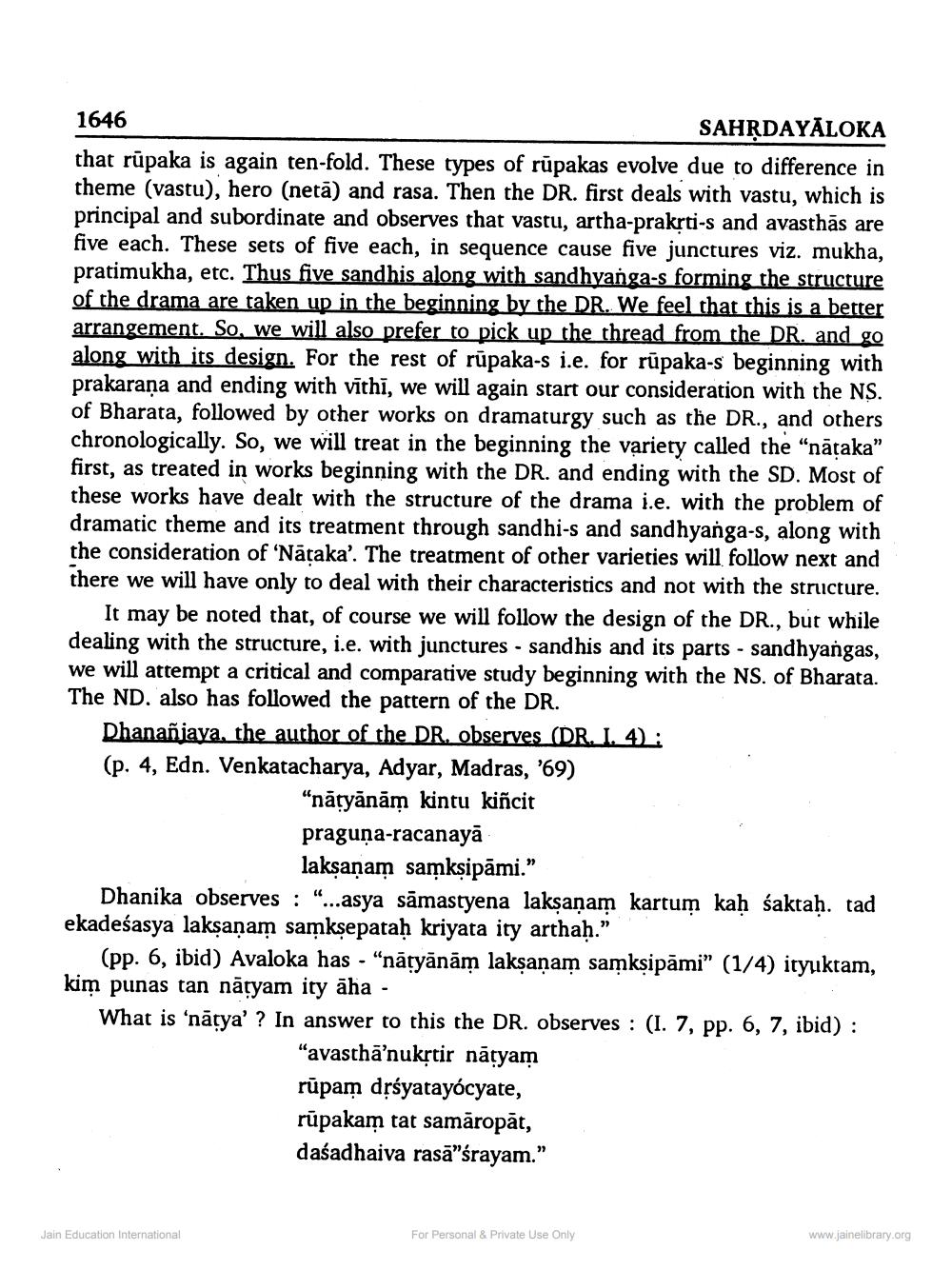________________
1646
SAHRDAYĀLOKA that rūpaka is again ten-fold. These types of rūpakas evolve due to difference in theme (vastu), hero (netā) and rasa. Then the DR. first deals with vastu, which is principal and subordinate and observes that vastu, artha-praksti-s and avasthās are five each. These sets of five each, in sequence cause five junctures viz. mukha, pratimukha, etc. Thus five sandhis along with sandhyanga-s forming the structure of the drama are taken up in the beginning by the DR. We feel that this is a better arrangement. So, we will also prefer to pick up the thread from the DR. and go along with its design. For the rest of rūpaka-s i.e. for rūpaka-s beginning with prakarana and ending with vīthi, we will again start our consideration with the NS. of Bharata, followed by other works on dramaturgy such as the DR., and others chronologically. So, we will treat in the beginning the variety called the “nātaka" first, as treated in works beginning with the DR. and ending with the SD. Most of these works have dealt with the structure of the drama i.e. with the problem of dramatic theme and its treatment through sandhi-s and sandhyanga-s, along with the consideration of Nataka'. The treatment of other varieties will follow next and there we will have only to deal with their characteristics and not with the structure.
It may be noted that, of course we will follow the design of the DR., but while dealing with the structure, i.e. with junctures - sandhis and its parts - sandhyangas, we will attempt a critical and comparative study beginning with the NS. of Bharata. The ND. also has followed the pattern of the DR.
Dhananiava, the author of the DR. observes (DR. I. 4): (p. 4, Edn. Venkatacharya, Adyar, Madras, '69)
“nāryānām kintu kincit praguna-racanayā
lakṣaṇam samkṣipāmi." Dhanika observes : "...asya sāmastyena laksanam kartum kaḥ śaktaḥ. tad ekadeśasya laksanam samksepatah kriyata ity arthaḥ.”
(pp. 6, ibid) Avaloka has - “nāryānām laksanam samksipāmi” (1/4) ityuktam, kim punas tan nāryam ity āha - What is ‘nātya'? In answer to this the DR. observes : (I. 7, pp. 6, 7, ibid) :
"avasthā’nukstir nātyam rūpam drśyatayocyate, rūpakam tat samāropāt, daśadhaiva rasā”śrayam.”
Jain Education International
www.jainelibrary.org
For Personal & Private Use Only




